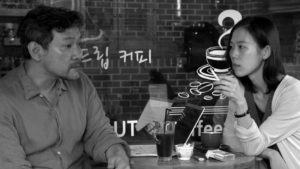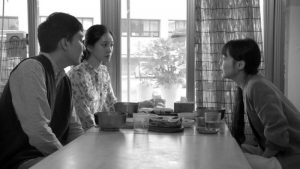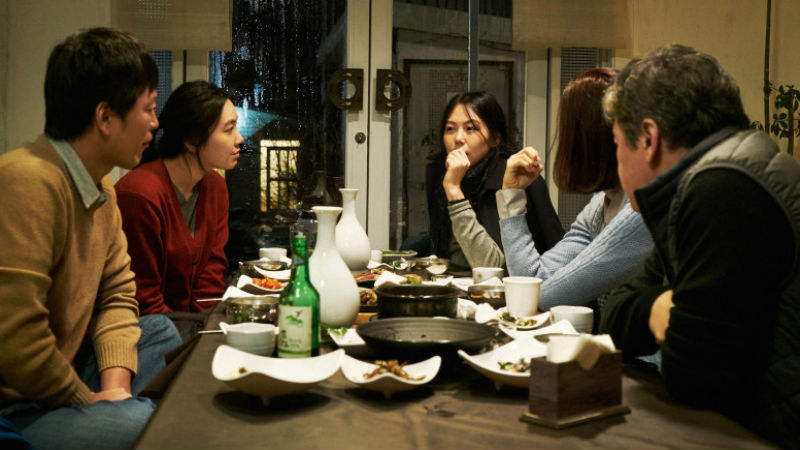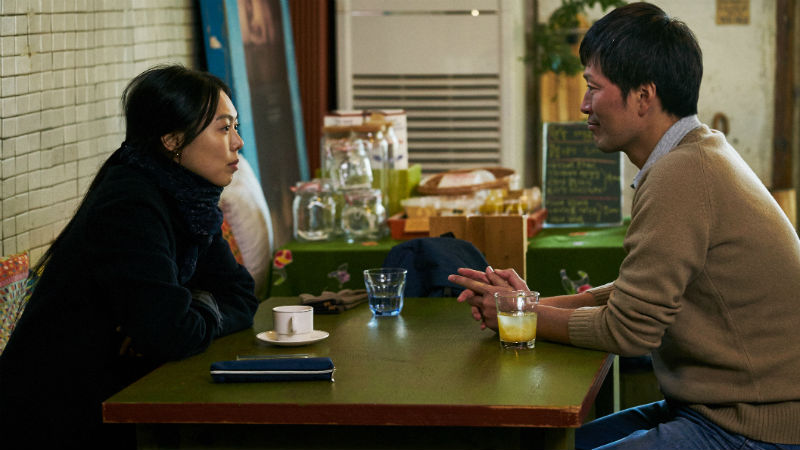QUICK AND DIRTY: LIVE FROM BERLIN
I have sorely missed the films of Hong Sang-soo: it’s been nearly three months since he last premiered a movie in a European film festival. In A Traveller’s Needs, he teams up with his regular partner Isabelle Huppert in order to create a highly conversation, lighthearted and pleasant cinema experience. His language and his aesthetics have barely changed. And they continue to work. If it ain’t broken, why fix it?
In this 90-minute drama entirely set in the suburbs of some unnamed Korean city, Iris (Huppert) is a French teacher and a lodger. She insists that her name is pronounced “Iris” instead of the anglicised “AHYris”, perhaps in order to retain her Francophone identity. She’s silly, honest and extremely easygoing – a very attractive combination. Her candid persona allows her to bond effortlessly with her Korean students. They are prepared to share secrets of their lives and cry in front of her. More than a language teacher, she’s an informal therapist. After all, people need to talk, be that in Korean, French or English (the language that she uses to communicate more extensively). She confesses to one of her students that she has no qualifications and barely any experience, having devised the strange teaching methods herself a few months earlier (she uses indexing cards instead of books). The revelation leaves the learner baffled, but this doesn’t prevent Iris from asking for more Makgeolli (a local alcoholic drink), in one of the film’s funniest scenes.
Iris’s landlord is a young man called Inguk (Ha Seongguk). They met casually in the park. One day, Inguk’s mother visits him and finds out about the tenant. She freaks out, lest her son is either having an affair with a much older woman, or is looking for a motherly replacement. The real nature of their relationship is never entirely clear. Perhaps Inguk is indeed in love, but the laid-back and spontaneous Iris seems more interested in going for walks in the park and drinking copious amounts of Makgeolli (Gently and continuous boozing is also a common thread in Sang-soo’s work). The four main characters have a unifying factor: they can play a musical instrumental each, and just as badly. Her students play the piano and the guitar, Inguk plays the keyboard, and iris plays the harmonica. It is impossible not to laugh as our protagonists tragically display their musical skills (or rather lack thereof).
This is a movie about impromptu, unlikely, fugitive and yet very genuine bonds between people of very different backgrounds. The seductive Iris is unabashed by her foreign nationality; in fact she uses it as an asset.
The 63-year-old Korean filmmaker is the king of casual awkwardness. His characters remain as ordinary and the conversations as banal as ever. The director finds humour in the micro-reactions (of surprise, confusion, indignation, affection, etc), and the very brief moments of silence. The performances ooze spontaneity, a result that can only be achieved through organic scripting. There are no big twists and no violence (neither physical nor psychological). All characters are multidimensional and profoundly human, and perhaps precisely for that reason extremely endearing. This sense of improvisation is in line with the film’s formal austerity. The camera hardly moves, except for a few clunky zoom movements. It feels almost like a low-budget documentary. Except of course, it isn’t: the characters are played by professional actors, and there is noticeable foley.
A Traveler’s Needs demonstrates that small talk is therapy, and that the content of the conversation is far less important than the affection between the characters. In a way, this also extends to the director and his creations. Watching the movies of Hong Sang-soo is also therapeutic, regardless of the plot. It is our love for the characters that prevails.
From the Official Competition of the 74th Berlin International Film Festival.












